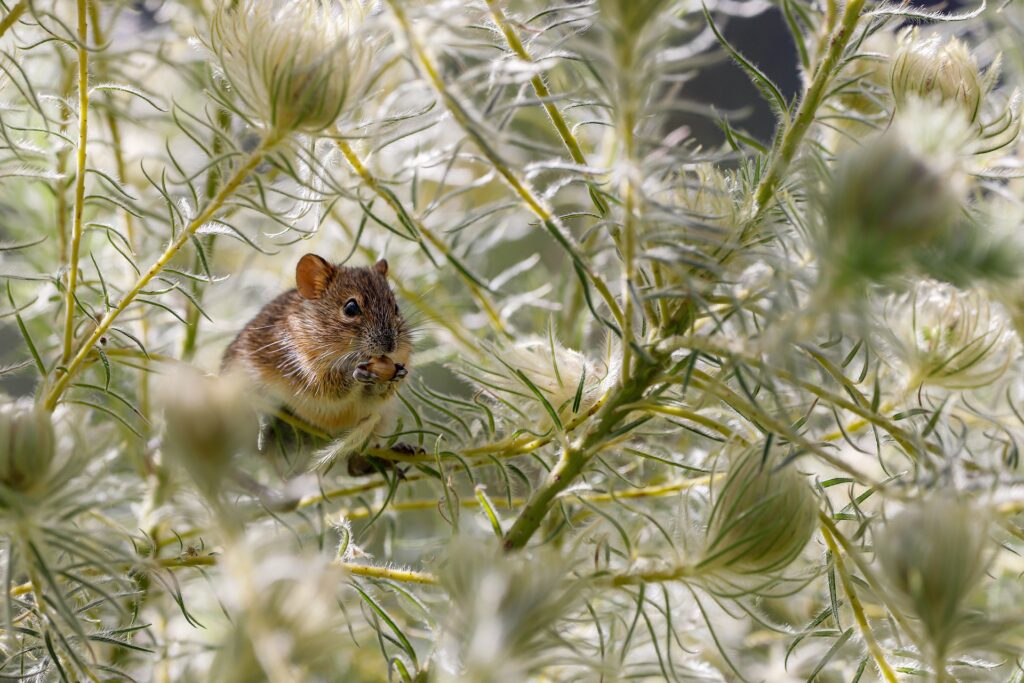Have you ever brought a brand-new Christmas tree home, only to find it’s infested with bugs? Each year, U.S. homeowners buy over 30 million Christmas trees to use for decorating their homes. While real evergreen trees may not be the most economical option compared to manufactured trees, these trees keep the air clean, can be recycled, and bring a fresh, wintery scent to your home. However, evergreen trees can host a number of pests that might not become apparent until you’ve already moved the tree indoors.
Common Types of Christmas Tree Bugs
Aphids
Aphids are one of the most common insects found on Christmas trees. They will only come inside if brought in on a living plant, but once inside, it’s very easy for them to survive off the Christmas tree’s needles and branches. While these pests can live in cold weather, a warm, heated home can also prompt their eggs to hatch. If you do find aphids on your Christmas tree, be careful not to squash them into your carpet or on your wall. Their squashed bodies can leave behind a purple or red residue that is almost impossible to remove.
Mites and Spiders
Both part of the Arachnid family, mites and spiders are two pests that live on evergreen trees. Of the common Christmas tree bugs, these pests pose the most danger because their bites can cause irritation to human skin. You’ll know your tree is hosting these pests if you see small red dots on your carpet and nearby furniture, or if your tree begins to prematurely lose its needles.
Sawflies
Named after their saw-shaped bodies, sawflies use their ovipositor to cut into leaves and lay their eggs along the surface. These eggs form in small, brown cocoons and hatch between one to two months after being laid. Once grown, these pests can eat a significant amount of leaf tissue, causing an extensive amount of damage to your Christmas tree.
Adelgids
While adelgids may bring holiday spirit because of their resemblance to a light dusting of snow, these invasive bugs collect at the base of needles and feed by sucking the sap out of branches. Because of their feeding habits, they can successfully survive indoors for months.
Pine Needle Scales
Pine needle scales appear as tiny, white dots on a Christmas tree’s needles. If not taken care of in time, pine needle scales can destroy an entire Christmas tree. If a section of your tree appears to have a thin, white, wax-like covering, this points to a pine needle scale infestation and should be addressed immediately.
Bark Beetles
These tiny, red or brown-colored insects easily blend in with tree bark, hence their name. To spot these small pests, look for tiny holes in your Christmas tree’s branches. Evergreen trees try to defend themselves against these bugs by releasing pitch, or plant resin. If you spot small blobs of this sap-like resin accompanied by trails of sawdust, it’s likely that your tree is fending off a bark beetle attack.
Praying Mantids
The fact that praying mantids make a home on Christmas trees comes as a shock to many homeowners. A praying mantis’s egg is often no larger than a walnut and can contain up to 100 baby mantids. If allowed to hatch indoors, this egg can quickly turn into an infestation of praying mantids. These bugs are cannibalistic and will soon eat each other if unable to find food. If you spot a light brown, walnut-shaped egg, clip the branch on your tree and place it outdoors away from your home.
How to Treat a Christmas Tree Infested With Bugs
Fortunately, bugs that hitch a ride from the Christmas tree farm don’t pose a significant health risk to homeowners, but they can certainly be a nuisance. A single evergreen tree can contain over 25,000 bugs, and while many will die from starvation once brought inside, it’s better to avoid bringing them indoors in the first place.
When buying your new Christmas tree, perform a thorough inspection to see if the tree has any symptoms of a current pest infestation. If you find one that appears healthy, give the tree a good shake to knock off any straggling pests and vacuum around the base of the tree before bringing it inside. To be extra careful, leave the tree in your garage for a few days to take care of pests that can’t survive indoors.
Other preventive measures, like Diatomaceous Earth and neem oil, can kill these pests before you bring the tree inside. Diatomaceous Earth, also known as DE, is a popular, insecticide powder. Take a brush and dust the powder over the tree’s branches to kill any insects living on the surface. An easier (and faster) pest control option is to use a neem oil spray. Mix several tablespoons of the oil with a gallon of water, move the mixture to a spray bottle, and lightly coat the tree with the spray.
If you don’t manage to control the bug infestation on your Christmas tree in time, don’t fret. Our year-round treatments exist to help homeowners deal with most types of pest infestation, big or small. Give our team a call to receive a quote and find out how we can help protect your home from the diseases and destruction a pest infestation can bring.









